Even though Elemental Green is an online resource for all things related to eco green building and renovation that doesn’t mean that we don’t love books. Sometimes the internet is the perfect way to compare products, do research, and start planning out a project. But of course, sometimes you really want the feel of the pages and weight of a great book in your lap as you peacefully while away an afternoon. Here is a collection of some of our favorite books about modern, sustainable home design to help you on your green home building and renovation journey.
We are a participant in the Amazon Services LLC Associates Program, an affiliate advertising program designed to provide a means for us to earn fees, at no additional cost to you, by linking to Amazon.com and affiliated sites.
Chris Magwood and Jen Feigin, Making Better Buildings: A Comparative Guide to Sustainable Construction for Homeowners and Contractors
From foundation to finish, a wealth of information is available on sustainable construction materials and methods. But there is no single resource that allows you to quickly and objectively compare the merits of each system for your particular project. Making Better Buildings cuts through the hype and provides the unvarnished facts about the upsides and downsides of the most widely discussed materials and technologies. Drawing on the real-world experiences of designer/builders, this guide comprehensively examines each approach in terms of:
- Cost, sourcing, availability, labor intensity, and ease of construction
- Energy efficiency, embodied energy, and environmental impacts
- Availability/accessibility
Each chapter is rounded out by a chart which summarizes the material in a quick and accessible manner.
Miki Cook & Doug Garrett, Green Home Building: Money-Saving Strategies for an Affordable, Healthy, High-Performance Home
One of the biggest myths about going green is that it’s more expensive. This book shatters that myth. The authors’ combined expertise in applied building science and eco green building come together in this book creating a must-have guide for builders, contractors, architects, designers, and homeowners. The authors show how to:
* Lower base construction costs to provide funding for high-performance upgrades.
* Achieve a net-zero energy home, including “zero-ing” water, waste, carbon, and associated costs within fifteen years.
* Live affordably into the future, despite anticipated rising costs for fuel, water, materials, taxes, and health care.
Allison A. Bailes III, A House Needs to Breathe… Or Does it?: An Introduction to Building Science
Mimi Zeiger, Micro Green: Tiny Houses in Nature
As the popularity of “micro-green” living continues to rise, designers and owners of tiny homes are coming up with some truly incredible, unique, and sometimes totally mind-blowing eco-friendly home designs. And Zieger’s Micro Green is like an international tour! From tree houses to pre-fabs, Micro Green presents small and sustainable living at its best. It’s the perfect jumping-off point for those not yet familiar with the concept of compact living — and don’t let the relatively small size fool you. Micro Green may be focused on living small, but it’s clear that the author is not afraid to think big. Some of the most architecturally interesting structures on the planet are featured side-by-side in this collection, and there’s no shortage of variety. In fact, reviewers rave about the book’s representation of many different styles, from the rustic and DIY to the fantastically modern. Zeiger beautifully represents rustic treehouses, airy domes, and recycled-scrap structures alike, complementing the vivid photography with detailed building plans and illustrations.
Sascha Peters, Material Revolution. Sustainable and Multi-Purpose Materials for Design and Architecture
It’s common knowledge that many raw materials are available in very limited qualities — and that in the future, we may be without some materials we’ve used regularly. The impending shortage of resources has prompted scientists all over the world to research possible alternatives. The result: a flood of all-new materials, which calls for specialized knowledge of their properties, their possible use, and their handling. How can we make sense of a resource pool that’s both growing and shrinking all at once? Enter Material Revolution, a comprehensive resource for anything and everything materials-related. This book bridges the gap between research/industry and designers/architects, offering a systematic overview of sustainable materials on the market today. Think of Materials Revolution as something of an eco-materials encyclopedia — it has everything you need to assess a new material’s suitability for any given project.
Laura Allen, The Water-Wise Home: How to Conserve, Capture, and Reuse Water in Your Home and Landscape
There’s a little something for everyone in this tale of what makes a home truly water-wise. According to the California-native author Laura Allen, a Water-Wise (or water-smart) home is one that “conserves and reuses water to create ecological and efficient water systems” The most advanced of Water-Wise homes can even be water-neutral, “meaning that no more water is consumed in the home than is collected from the rain.” Can you imagine?! In this book you’ll find crystal-clear DIY guidance for the planning, design, and implementation of different systems, with gorgeous and relevant illustrations at every turn. We especially love the book’s DIY section on greywater systems, covering everything from planning to installation in nearly 100 pages — one of the most comprehensive guides to greywater reuse to date. And just a few dozen pages in, you’ll find practical water-saving tips you can start implementing into your daily routine immediately.
Carl Stein, Greening Modernism: Preservation, Sustainability, and the Modern Movement
There’s a powerful connection between individual building design choices and the global energy and environmental crises — and world-renowned author Carl Stein provides the perfect explanation. Greening Modernism focuses on highlighting the important environmental costs and benefits of current building trends and the implications of each. Continued use of finite resources and inefficient design methods, for example, is one contributing factor in the global energy and resource shortage we currently face. Increased construction of modern and eco-friendly buildings, however, has caused a reduction in energy and resource demand as well as a reduced need for waste processing. Greening Modernism is far from a how-to guidebook — and truthfully, very different than the other books we’ve included here — but it provides the perfect visualization of the positive impact that eco green building trends have on the planet. If you’re wondering whether your green design choices will really make a difference, you’ll find the answer here.
Terence Conran, Eco House Book
We certainly appreciate books focused on modern, sustainable home design and building from the ground up — and Conran’s insights can be applied to new home construction projects. But what we love most about this book is the focus on making eco-friendly upgrades to existing structures. The author illustrates an incredibly broad range of sustainable tweaks and changes — from the minuscule to the massive. If you’re ready to boost your home’s eco-green factor, whether in a small or big way, Eco-House Book may be the perfect place to start the planning process.
Charles Bloszies, Old Buildings, New Designs: Architectural Transformations (Architecture Briefs)
What does the absolute perfect modern, sustainable home design project look like to you? You may be picturing a brand-new build that starts with nothing but an empty patch of grass — after all, the greenest buildings tend to be the newest buildings, designed from the very beginning with sustainability in mind. But this is not typically the case — many sustainable building endeavors are based around existing structures. More and more architects are being hired to design new adaptations for already-existing buildings and homes. This growing movement to reuse buildings presents a whole new range of design challenges and opportunities. How can an architect make the best use of the building’s structure, while still upping the green ante? Old Buildings, New Designs uses a selection of case studies to contrast new construction with the old, and provides powerful insights into the challenges presented by each, as well as how to overcome them.
Marta Serrats, 150 Best Eco House Ideas
Beautiful photography meets a diverse collection of illustrations in this stunning book — and it’s a match made in heaven. Trust us: clicking “next” on Houzz’s website could never compare to paging through these hard-copy images that feel larger than life. 150 Best Eco House Ideas highlights a vast collection of trending eco-friendly designs and features. It’s extremely visual, drawing its core strength from well-executed photographic essays rather than words. Each of the 64 stunning projects featured in this book are documented completely, through their many gorgeous photographs as well as architectural drawings, illustrations, and floor and site plans. Anyone seeking to boost the sustainability factor of their next project is sure to find bountiful inspiration in this nearly 600-page read.
Francesc Zamora, 150 Best Sustainable House Ideas
150 Best Sustainable House Ideas features the latest innovations in environmentally friendly home design. From heating and cooling solutions to wind energy systems, solar paneling, thermal glazing, and even Trombe walls, the ideas featured inside are complemented by photographs and architectural plans of gorgeous, sustainable houses around the world. If you’re looking for details about building a green home, this isn’t the book for you. But, if you’re looking for inspiration, you’ll find more than your fair share in this 504 page tome.
Avi Friedman, Sustainable: Houses with Small Footprints
Sustainable features forty-five houses from around the world that show us how time-tested eco-friendly design principles—including local materials, natural ventilation strategies, and earth shelter construction—can be applied to any type of home. It also features the latest cutting-edge technologies—such as indoor farming and “living walls” made of plants. The diversity and ingenuity of the homes showcased here make Sustainable “a uniquely coherent and authoritative volume on sustainable residential design.”
Meg Calkins, The Sustainable Sites Handbook: A Complete Guide to the Principles, Strategies, and Best Practices for Sustainable Landscapes
When we think of green building, we typically think of construction elements like insulation, windows, flooring, and lighting. But what’s happening outside is just as important as what’s happening inside — and no green building project would be complete without an emphasis on sustainable landscaping. The Sustainable Sites Handbook is the definitive resource guide for sustainable site design, construction, and management. It’s teachings are largely based on The Sustainable Sites Initiative (SITES), the first national rating system for sustainable landscapes in the U.S. This guide features comprehensive and detailed information on the best practices, strategies, tools, and principles for effective, eco-friendly site design. Whether you’re building from the ground up, seeking SITES credits, or simply looking to give your property’s landscaping an eco-makeover, you’ll find everything you need to know in The Sustainable Sites Handbook.
Dominic Bradbury, New Natural Home: Designs for Sustainable Living
Above all else, British author Dominic Bradbury celebrates the diversity of international design concepts in this visual masterpiece of a book. No two of the 25 featured projects are alike; each project displays unique design concepts originating from nine different countries overall. Bradbury’s idea of a sustainable home is easy to digest: “The sustainable home is one that allows itself to be successfully oriented to take best advantage of natural conditions, taking into account important concerns such as solar gain, natural light, and cross ventilation … At the same time, the new natural home will also draw on locally available materials, such as regionally sourced timber or stone.” Bradbury’s book is a genuine goldmine of innovative and sustainable design trends popping up all over the globe.
Melissa Rappaport Schifman, Building a Sustainable Home: Practical Green Design Choices for Your Health, Wealth, and Soul
The reviews for this personal narrative of the author’s experience building her home speak for themselves. Here’s a good example: “When an environmentalist with a University of Chicago MBA decides to build her dream home, she weighs the health, sustainability, and economics of every detail. By mastering the US Green Building Council’s LEED scoring system, she steps us through her reasoning on each green investment decision, with a highly readable and compelling personal narrative. Who knew that triple-paned windows, toxins in paint and building materials, ground source heat pumps, native plantings, and home ventilation could be so interesting? Everyone who builds a home should read this book first.” ―Michael Noble, Executive Director, Fresh Energy
David Johnston and Scott Gibson, Green from the Ground Up: Sustainable, Healthy, and Energy-Efficient Home Construction (Builder’s Guide)
Johnston and Gibson write: “What we alternately call green building or sustainable building is a way for people to make a positive difference in the world around them—if not reversing, then at least reducing their impact on the planet. Not coincidentally, it has its own rewards on a scale that all of us can immediately understand. If becoming model citizens of Planet Earth is too much to get our arms around, living in healthier, more comfortable houses that are less expensive to operate and last longer is certainly an attractive idea. Who wouldn’t want to participate in that?” True, Green from the Ground Up isn’t exactly what you think of as “light reading.” But we think that any prospective high-performance homeowner should take a gander before they start talking to architects and builders about their project.
Sheri Koones, Prefabulous and Sustainable: Building and Customizing an Affordable, Energy-Efficient Home
Have you found yourself wondering what the benefits to prefab homes are? Read this book! Koones spends plenty of time dispelling the myths surrounding prefabricated homes, in an approachable manner that would appeal to even the biggest skeptics. Take this tour of 25 modern, sustainable homes and see for yourself that factory-built homes are greener, more efficient, sturdier, and more cost-effective than you might have ever imagined.
BONUS BOOK! Henry Gifford, Buildings Don’t Lie: Better Buildings by Understanding Basic Building Science
A simple, clear, thorough, and complete explanation of basic building science applicable to any building in any climate. Over 1,000 large color drawings and photos, plus fun quizzes. No charts, graphs, or math. Read this book and become your own expert on making buildings comfortable, healthy, safe, durable, and very energy efficient, because you will understand the underlying science of the movement through buildings of heat, air, water, light, sound, fire, and pests, and how these can be controlled. This book also includes sections on designing building enclosures, indoor air quality, choosing heating and cooling systems, and how to ventilate, heat, and cool different types of buildings.
If you’re looking to start your own little library focused on eco green building we think these books are a great way to start. No matter what your knowledge level is right at this moment, if you read these books you’ll be talking about sustainability and green design like an expert in no time. And if you’re at the beginning stages of building your own green home or doing a big renovation, the more research you do the happier you’ll be with your finished project. Plus, most of these books are just plain beautiful, so we’re sure you’ll enjoy paging through them and dreaming of your future perfect green home!



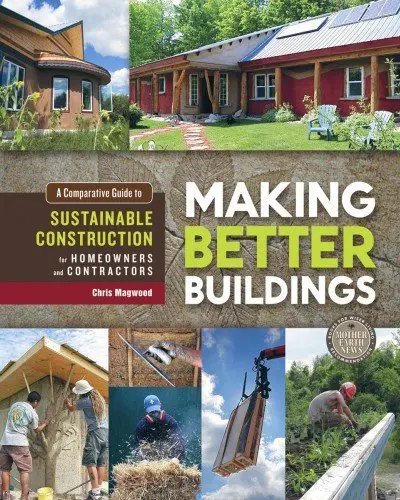
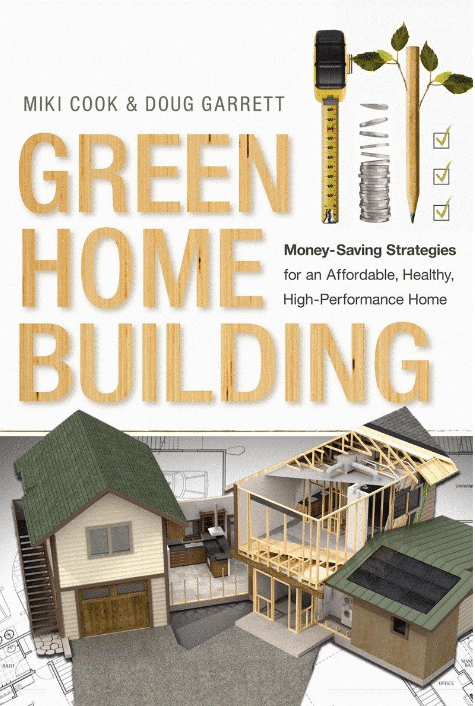
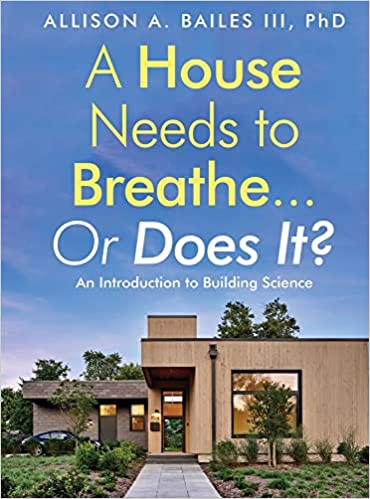
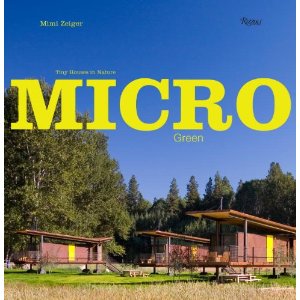

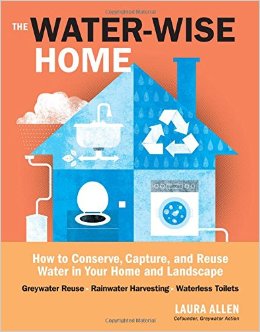

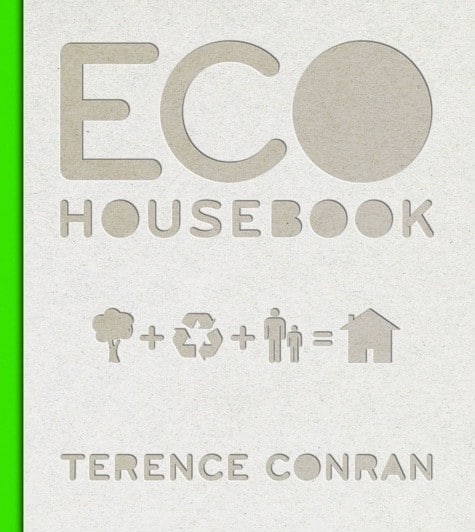
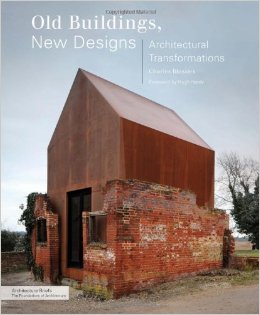
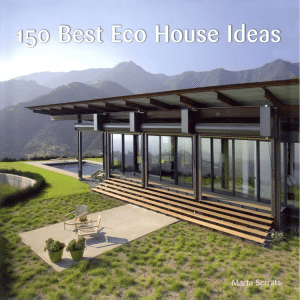


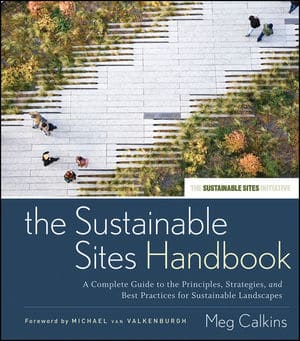
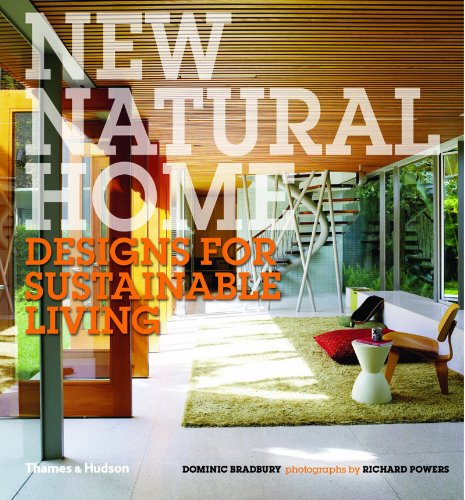
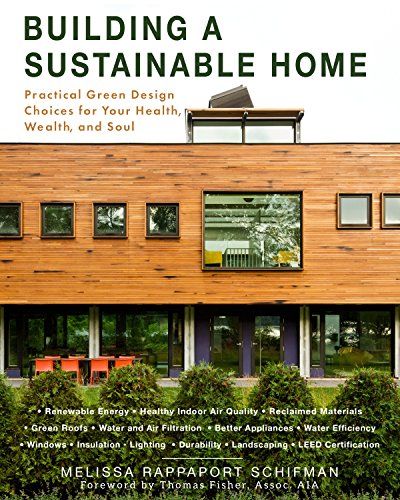
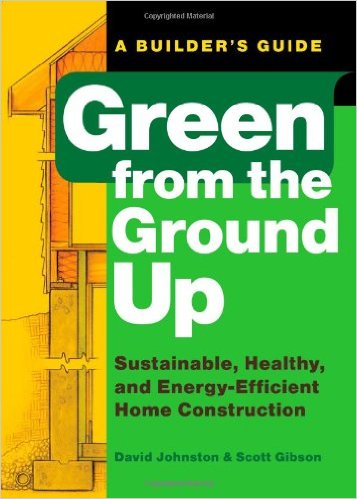
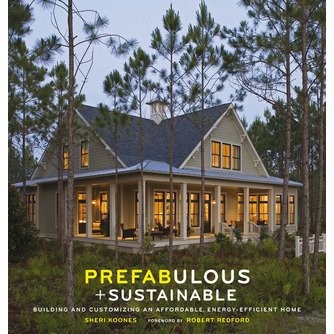
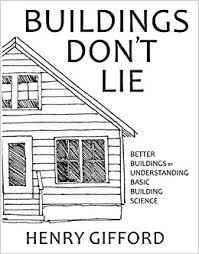



![10 Steps Toward a Zero Energy Home [Infographic]](https://elemental.green/wp-content/uploads/2016/04/cbfb-440x264.jpg)

